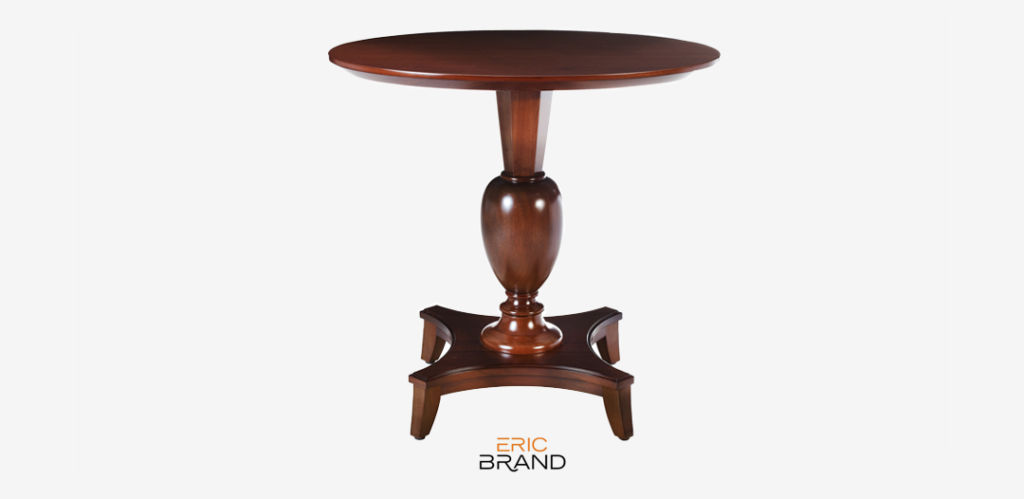TO EVERYTHING (WOOD) TURN, TURN, TURN (WITH A LATHE)
Just about any designer will agree that while woodturning technically qualifies as woodwork, it’s often considered a completely different craft. “Woodturners” tend to be devoted to their specific craft, since there is almost no end to the projects that can be created on a lathe.
Understanding the difference between the two crafts is a matter of tools and technique. Woodturning is the process of carving a block of wood into a symmetrical object – such as a spindle, bowl, or furniture leg – while using a motor-driven lathe to spin the wood at high speed. While spinning, cutting tools – including a variety of chisels and knives – gradually carve the piece into the desired shape.
So what exactly is a “lathe?” A lathe is a machine that rotates a workpiece about an axis of rotation to perform various operations such as cutting, sanding, knurling, drilling, deformation, facing, and turning – as well as symmetry.
The basics of this technique was first used by the Greeks as far back as the 13th or 14th century BC, making this a truly ancient form of woodwork. Of all the types of lathes in use, woodturning lathes are the oldest variety from which all others are derived from. An adjustable horizontal metal rail (known as “the tool rest”) between the material and the operator accommodates the positioning of shaping tools, which are usually hand-held.
Sanding follows the shaping process, in which sandpaper is applied against the still-spinning object to smooth the surface for the desired texture. The tool rest is usually removed during sanding, as it may be unsafe to have the operator’s hands positioned between it and the spinning wood.
High-rates of speed are utilized for this spinning, typically from about 500 RPM to a max speed of about 4000 RPM! So you definitely want to be careful while operating this machine.
One of the tools most commonly used with a woodturning lathe is the Roughing Gouge. While a very versatile gouge, it must be used properly in order to get good results. The first step in learning the craft of woodturning is practicing with this type of gouge.
Of course, there are other tools that can be implemented depending on the desired shape and texture. Skew Chisels can be used for making square-grooves, as well as plane and shape many other profiles. However, the skew chisel’s effectiveness for grabbing means that you must use the proper safety precautions to avoid injury.
Then there’s the Parting Tool, which – as its name suggests – is commonly used to separate a finished turning from the rest of the stock. However, it can also be used for other tasks, such as cutting square-shaped grooves in a spindle.
Many of those most common lathe cuts – such as square cuts, V-grooves, fillets, and coves – can be achieved with the above tools. An exceptionally helpful technique for producing visually identical pieces is placing the first turning, or an existing sample being copied, directly behind the lathe. With the sample out of the way but within reach, duplicating shapes and contours on the new piece is much easier. It’s also very convenient to be able to measure various points of a feature to be sure it’s sized accurately on the new piece.
Everything you need to turn wood into spindles, bowls or furniture legs with a lathe is easily obtainable. Like all woodwork, the only real challenge is taking the time to develop your craft in a safe and consistent manner. With these various tools and techniques, the design options of woodturning are literally endless – which is no doubt why it has endured as a proud vocation for so many centuries.
________________________
ERIC BRAND
Founded in 1996 and based in San Francisco, Eric Brand offers custom-styled furniture and worldwide sourcing along with exquisite materials and finishes, specifically for the high-end residential design market and hospitality industry.
JUNIPER
Named after the fog-licked Juniper trees on the hills of San Francisco, Juniper is an in-stock furniture collection by Eric Brand that pays homage to timeless materials, techniques and silhouettes – brought to life through expert craftsmanship.

